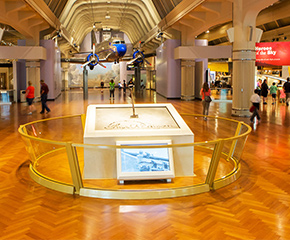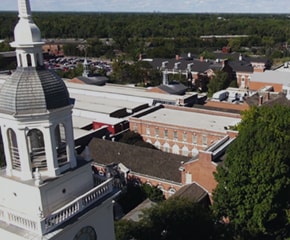Union Army Zouave, Infantry Private, 1861-1865
Add to SetSummary
This carte-de-visite features an unknown Union Army Zouave infantry private standing in a photographer's studio, about 1863. Carte-de-visite was a small photographic print on cardboard stock made by professional photographers. Popular in the United States from the Civil War in the 1860s through the 1880s, people exchanged and collected CdVs to help them remember family and celebrities. …
This carte-de-visite features an unknown Union Army Zouave infantry private standing in a photographer's studio, about 1863. Carte-de-visite was a small photographic print on cardboard stock made by professional photographers. Popular in the United States from the Civil War in the 1860s through the 1880s, people exchanged and collected CdVs to help them remember family and celebrities.
Soldiers fighting in the Civil War often had their photographic portraits made and mailed them to family and friends back home. This carte-de-visite features an unknown Union Army Zouave infantry private standing in a photographer's studio, about 1863. This soldier is shown in a typical Zouave uniform with a faux vest. His equipment includes a U.S. belt buckle, cap pouch for ammunition and an 1848 musket with bayonet. The colorful and ornamental Zouave outfit was popular with U.S. militia units in the 1850s and volunteer army corps during the Civil War. The original Zouaves were French colonial troops in North Africa during the 1830s. The traditional garments of Algeria inspired their unusual infantry uniforms. In the U.S., the Zouaves were known for their remarkable attire and military accomplishments.
Although the photographer is unknown, this carte-de-visite documents the care given to the dramatic pose of the soldier and the fabric artistically draped behind him. Contrasted to this care is the uneven placement of the photographic paper on the card. This may tell us something of the large volume of soldiers' portraits made and the rushed work of the photographer's assistants to meet the demand.
Carte-de-visite, French for visiting card, is a type of small photographic print on cardboard stock made in the nineteenth century by professional photographers. Popularized by the French photographer, André Disdéri in 1854, this format measured about 4 x 2.5 inches--the same size as personal calling cards of that era. Multiple positive prints on paper were made from a single glass negative and mounted on the cards. The backs often carried advertisements for the photographer. When they were mailed in the United States between 1864 and 1866, CdVs bear a tax stamp on the back. This was a source of Federal revenue to pay for the Civil War expenses. Popular in the United States from the 1860s through the 1880s, this size continued to be made into the early 1900s. After having their portraits made at the photographer's studio, people exchanged them among family and friends. Collecting celebrity portraits was also a favorite hobby. Many CdVs were gathered into photograph albums, serving as remembrances of the people depicted.
Artifact
Carte-de-visite (Card photograph)
Date Made
1861-1865
Subject Date
1861-1865
Creators
Unknown
Collection Title
On Exhibit
By Request in the Benson Ford Research Center
Object ID
2005.0.21.3
Credit
From the Collections of The Henry Ford.
Material
Cardboard
Paper (Fiber product)
Technique
Albumen process
Mounting
Color
Black-and-white (Colors)
Dimensions
Height: 3.75 in
Width: 2.375 in
Inscriptions
Red bordered label adhered to back of image typed: 3788





